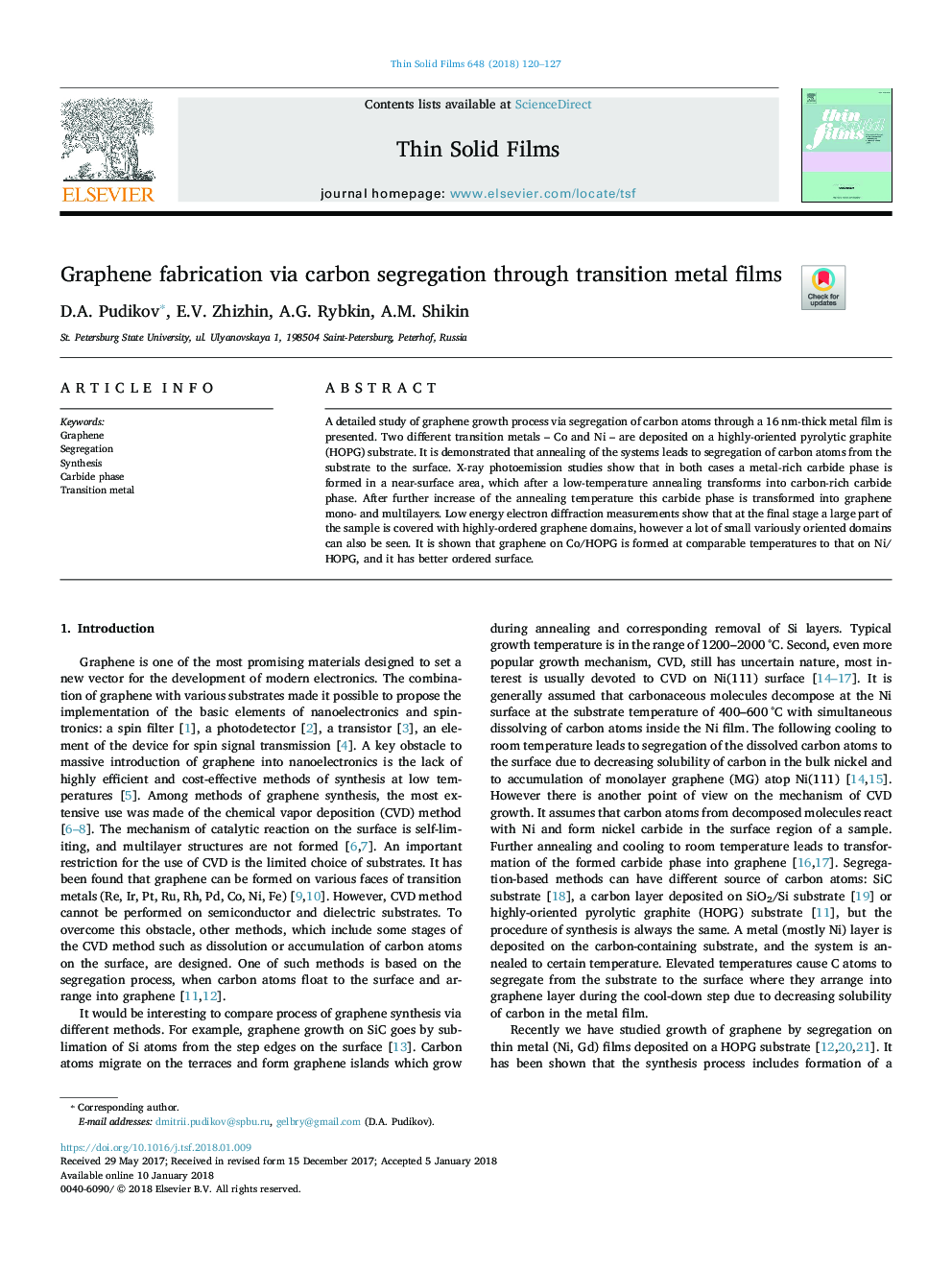| Article ID | Journal | Published Year | Pages | File Type |
|---|---|---|---|---|
| 8033002 | Thin Solid Films | 2018 | 8 Pages |
Abstract
A detailed study of graphene growth process via segregation of carbon atoms through a 16â¯nm-thick metal film is presented. Two different transition metals - Co and Ni - are deposited on a highly-oriented pyrolytic graphite (HOPG) substrate. It is demonstrated that annealing of the systems leads to segregation of carbon atoms from the substrate to the surface. X-ray photoemission studies show that in both cases a metal-rich carbide phase is formed in a near-surface area, which after a low-temperature annealing transforms into carbon-rich carbide phase. After further increase of the annealing temperature this carbide phase is transformed into graphene mono- and multilayers. Low energy electron diffraction measurements show that at the final stage a large part of the sample is covered with highly-ordered graphene domains, however a lot of small variously oriented domains can also be seen. It is shown that graphene on Co/HOPG is formed at comparable temperatures to that on Ni/HOPG, and it has better ordered surface.
Related Topics
Physical Sciences and Engineering
Materials Science
Nanotechnology
Authors
D.A. Pudikov, E.V. Zhizhin, A.G. Rybkin, A.M. Shikin,
